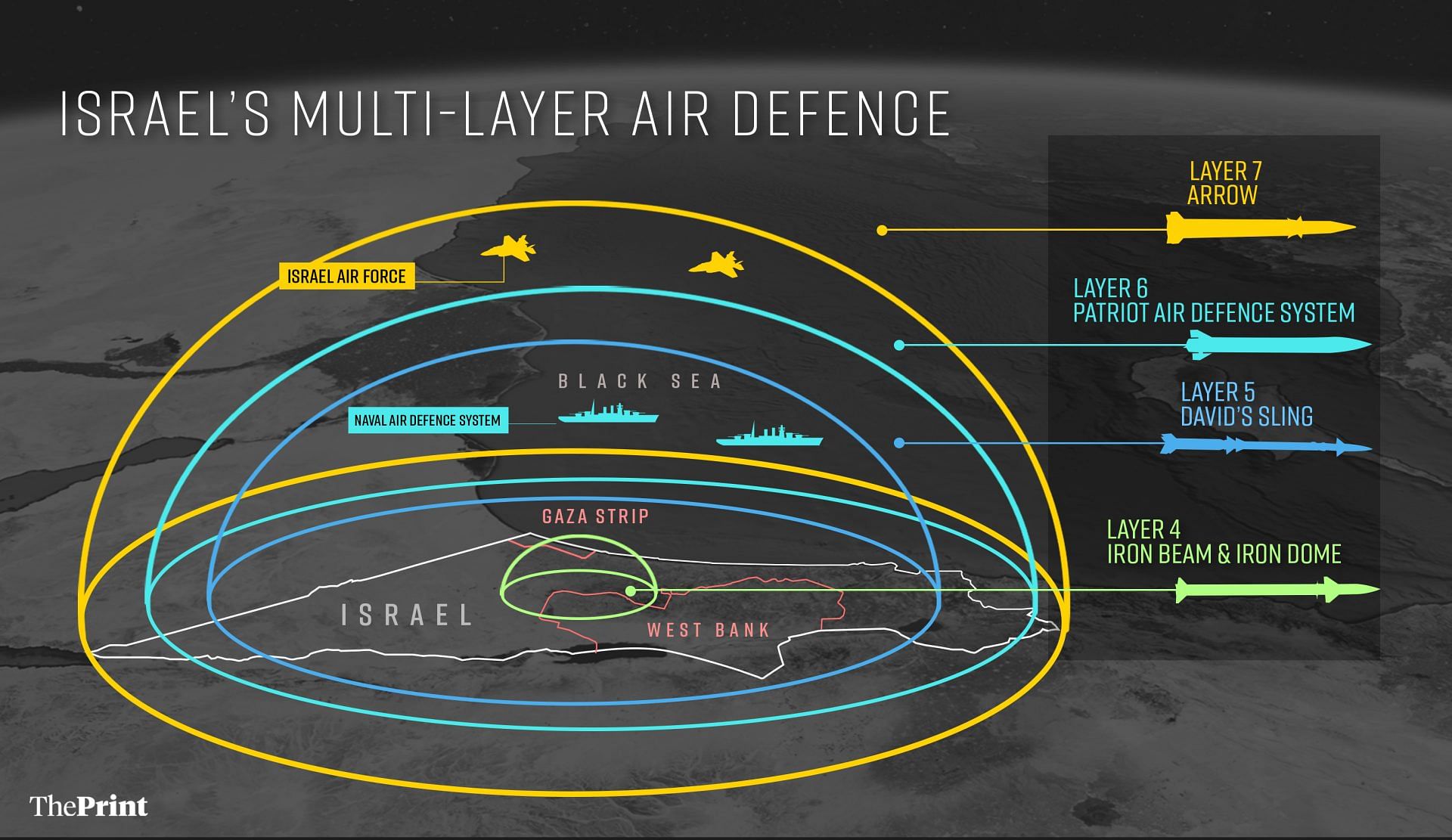Trump's Golden Dome: A Realistic Missile Defense Strategy?

Table of Contents
The Technological Challenges of a Comprehensive Missile Defense System
Creating a truly effective missile shield against a determined adversary is a monumental technological undertaking. The complexities involved render a "Golden Dome" scenario highly improbable, if not outright impossible, with current technology.
Limitations of Current Interceptor Technologies
Intercepting ballistic missiles, from short-range ballistic missiles (SRBMs) to intercontinental ballistic missiles (ICBMs), presents a formidable challenge. These weapons travel at hypersonic speeds, following complex trajectories, and often employ countermeasures designed to defeat interception.
- Distinguishing Warheads from Decoys: Modern ballistic missiles frequently utilize multiple decoys to overwhelm missile defense systems. Differentiating genuine warheads from decoys remains a significant hurdle.
- Addressing Hypersonic Weapons: The advent of hypersonic glide vehicles (HGVs), capable of maneuvering at extreme speeds and altitudes, further complicates interception. Their speed and unpredictable trajectories make them extremely difficult to track and target.
- Achieving High Interception Rates: Even with advanced technology, achieving a consistently high interception rate remains elusive. A single successful penetration could have devastating consequences.
Numerous missile defense tests, some successful and others not, highlight the inherent difficulties. The inconsistent success rate underscores the technological limitations of current systems.
The Cost Factor of a "Golden Dome"
The financial burden of developing, deploying, and maintaining a large-scale missile defense system like the envisioned "Golden Dome" is astronomical.
- Research & Development: Continuous research and development are crucial to keep pace with evolving offensive missile technologies. This represents a massive ongoing expenditure.
- Infrastructure Costs: Deploying a network of radar systems, interceptor missiles, and command-and-control centers across vast geographical areas requires a substantial investment in infrastructure.
- Maintenance and Personnel: The operational costs associated with maintaining and staffing such a complex system are enormous, requiring substantial ongoing funding.
The exorbitant cost of a comprehensive missile defense system must be weighed against other vital national security priorities, such as improving conventional forces, cybersecurity, or addressing other global threats. The opportunity cost of diverting substantial resources to missile defense warrants careful consideration.
Strategic Implications and Geopolitical Ramifications
The pursuit of a comprehensive missile defense system carries significant strategic implications and geopolitical ramifications. Its implementation could unintentionally destabilize the global security environment.
The Potential for an Arms Race
A robust US missile defense system could trigger a new arms race, prompting rival nations such as Russia and China to develop more advanced and numerous offensive weapons to overcome the defense.
- Escalation of Tensions: Such an arms race would likely lead to increased military spending, heightened regional tensions, and a greater risk of miscalculation or accidental conflict.
- Destabilization of the Global Strategic Balance: The potential for a nation to feel invulnerable to attack could embolden aggressive actions, undermining existing strategic stability mechanisms.
History provides ample examples of arms races, demonstrating how the pursuit of security through military build-up can ironically increase insecurity.
The Question of Effectiveness and Vulnerability
Even the most advanced missile defense system is not foolproof. Technological breakthroughs by adversaries, or the use of overwhelming force, could render it ineffective.
- Limitations of Layered Defense: While a layered defense system might offer multiple opportunities for interception, it's not without vulnerabilities. A single point of failure in the system could compromise the entire network.
- Vulnerability to Cyberattacks: Modern missile defense systems rely heavily on sophisticated computer networks, making them vulnerable to cyberattacks that could disable their functionality.
- Overwhelming Force: A sufficiently large-scale missile attack could saturate any defense system, overwhelming its capacity to intercept all incoming missiles.
The concept of "overwhelming force" highlights the inherent limitations of any missile defense system.
Alternative Approaches to Missile Defense
Relying solely on a technologically driven "Golden Dome" approach is unrealistic and potentially counterproductive. Alternative strategies should be prioritized.
Emphasis on Diplomacy and Arms Control
International cooperation and arms control treaties can play a vital role in mitigating the threat of missile attacks.
- De-escalation Strategies: Diplomatic efforts to de-escalate tensions and build trust between nations can reduce the likelihood of missile use.
- Risk Reduction Measures: Agreements aimed at reducing the risk of accidental or unauthorized missile launches can significantly enhance global security.
- Successful Examples: The history of arms control agreements, such as the Intermediate-Range Nuclear Forces (INF) Treaty, demonstrates the potential for diplomatic solutions.
Focus on Preemptive Measures and Intelligence Gathering
Proactive strategies, including enhanced intelligence gathering and early warning systems, are crucial complements to any missile defense system.
- Preventing Missile Launches: Superior intelligence gathering can allow for the timely identification and neutralization of missile threats before launch, negating the need for costly interceptions.
- Deterrence: A strong and credible deterrent, demonstrated through a robust military posture and effective alliances, can significantly reduce the risk of missile attack.
Conclusion
The pursuit of a comprehensive missile defense system like the "Golden Dome" presents significant technological, financial, and geopolitical challenges. While missile defense technologies play a role in national security, achieving a truly impenetrable shield remains elusive. A realistic approach demands a multifaceted strategy that emphasizes diplomacy, arms control, intelligence gathering, and deterrence, alongside a more modest and carefully targeted missile defense program. Continue the discussion on effective missile defense strategies, exploring alternative approaches to national security and learning more about the realities of ballistic missile defense.

Featured Posts
-
 Ray Seals Former Pittsburgh Steelers Defensive Lineman Passes Away At 59
May 22, 2025
Ray Seals Former Pittsburgh Steelers Defensive Lineman Passes Away At 59
May 22, 2025 -
 Thousands Of Zebra Mussels A Casper Boat Lift Infestation
May 22, 2025
Thousands Of Zebra Mussels A Casper Boat Lift Infestation
May 22, 2025 -
 The Blake Lively Dispute Selena Gomezs Warning To Taylor Swift Amidst Justin Baldoni Lawsuit
May 22, 2025
The Blake Lively Dispute Selena Gomezs Warning To Taylor Swift Amidst Justin Baldoni Lawsuit
May 22, 2025 -
 Core Weave Crwv Stock Performance Analysis Last Weeks Significant Increase
May 22, 2025
Core Weave Crwv Stock Performance Analysis Last Weeks Significant Increase
May 22, 2025 -
 Yaron Lischinsky And Sarah Milgrim Victims Of Deadly Dc Attack
May 22, 2025
Yaron Lischinsky And Sarah Milgrim Victims Of Deadly Dc Attack
May 22, 2025
